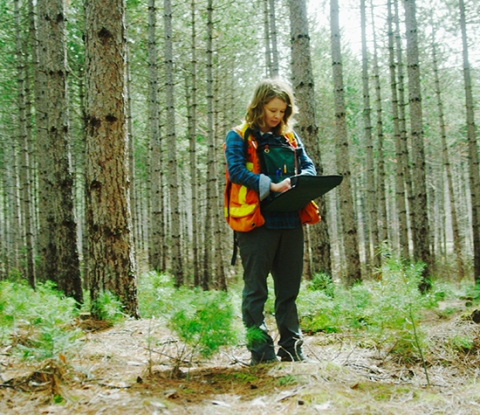
Summer STEM Activities
The summer months are upon us and along with longer days and warm weather, summer provides an opportunity to get outside and engage with the world around us. Let’s Talk Science offers numerous fun activities to get youth outside and engaged in science, technology, engineering, and math (STEM). STEM at Home encourages active learning and discovery outside of the classroom with hands-on activities using materials commonly found at home and features videos from around the web curated by subject.
Bird Species as Bioindicators
Bioindicators are species and groups of biological processes that scientists can study to learn about the surrounding ecosystem. Take a walk around your neighbourhood and pay attention to what birds are common in your area. Birds are important contributors to the environment; hummingbirds and orioles are important pollinators, mockingbirds are seed dispersers, and warblers are agents of biological control.
If you’re interested in identifying bird species around you or are curious about which species might be native to your area, Bird Watching HQ has a great identification resource. Canadian Geographic lists the top ten birds to look out for during the summer, including the Canada Jay, which is commonly found in Northern forests across Canada.
Interesting Insects
While out and about searching for birds in your area, pay attention to the insects you see on the ground and in the sky. Did you know all insects have three things in common? All insects have a head, thorax, and legs. Try identifying as many insects as possible and which insects are common. Is there a large population of mosquitoes near you? You likely live in a humid climate with a body of water nearby. Similar to birds, insects can tell us a lot about the ecosystem. Be sure to explore your area, identify the insects you see and discover what role they play.
If you are looking for a challenge and are curious about solo bees, designing and building a bee house might be for you! Using supplies commonly found around the house and a little adult supervision, building a bee house and placing it on your property can be an educational method of sustaining bee populations.
Forces of Motion and Friction
What does your local park have in common with how fast you can travel on your bicycle? Forces of motion and friction! Friction is the force that resists motion, slowing or stopping motion altogether when two objects are rubbed together. Slides are designed to reduce friction so that we can easily slide down them. If the slide were to be wet, the coefficient of friction would decrease making it even more slippery. If slides were made out of rubber, they wouldn’t be very fun. Rubber has a relatively high coefficient of friction and is a common compound in tires for cars and bicycles to increase grip on the road.
You don’t have to pedal harder to go faster. You just have to understand a little bit about gravity, drag and friction! Hop on your bike and ride into the wind and then with the wind at your back. This is wind resistance and riding with the wind will surely make you faster. Try exploring what happens with more and less air in the tires.
Summer Daily Discovery Series
In this program, children ages 9-11 are invited to spend as much time out of their seats moving as they engage in hands-on projects exploring the world of science, technology, engineering, and mathematics.
Join us for a short daily video activity and a new theme each week! Hosted by STEM mentors from universities across Canada, the Daily Discovery Series encourages children to be the innovators of tomorrow from the comfort of home.
Explore some amazing careers of people who spend lots of time outside!
